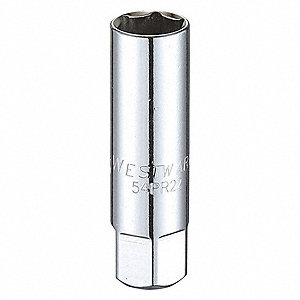Hello!
This forum has been a great help in deciding which way to go on a used boat! The result:
1988 Larson V175 (bowrider).
New engine about 3 years ago (two owners ago didn't winterize and cracked the original engine).
Typical sun damage to seats (new ones on order already) and engine cover vinyl.
All gauges work, lights, new fenders, oars, innertubes, life jackets, docklines, etc...
Starts right up. No soft spots. Boat was detailed and buffed last year and looks new on the outside!
The bad: Typical stuff. Idles too high and it has to be babied into gear so as not to stall/clunk into gear. I got the boat for a steal (guy getting divorced from wife, needs the cash, kids are older and don't use the boat, he wants a fishing boat instead, etc...). I also bought it prepared to spend as much as $1-2K if need be on mechanicals. Hell, a new boat is $40k, right? I'm going to measure the cables for stretch/adjustment and do my own impeller/water pump and leave the rest for the Mercruiser mechanic if need be. I'm assuming that the cables are old and/or out of adjustment. Worst case is that the cable going into the drive is bad...and the guy has had the boat for the last 4 years and has never done a gimbal or bellows. With the new engine three years ago I wonder if the whole works needs to be aligned anyways? (I guess the other worst case is that the upper drive has been clunking into gear for too long and might be bad, but let's all stay positive.) Again, while I'd rather not spend too much money I got the green light from my wife to do anything to make the boat reliable. Besides, it wouldn't be a boat without a little $$$pain$$$ right?
Any thoughts on the high idle and if that is the reason for the clunking into gear? It also stalls when going into reverse (or was it from reverse to neutral...I can't remember). It does go into gear, but the p/o really was really slooooowwww with the shifting...
This forum has been a great help in deciding which way to go on a used boat! The result:
1988 Larson V175 (bowrider).
New engine about 3 years ago (two owners ago didn't winterize and cracked the original engine).
Typical sun damage to seats (new ones on order already) and engine cover vinyl.
All gauges work, lights, new fenders, oars, innertubes, life jackets, docklines, etc...
Starts right up. No soft spots. Boat was detailed and buffed last year and looks new on the outside!
The bad: Typical stuff. Idles too high and it has to be babied into gear so as not to stall/clunk into gear. I got the boat for a steal (guy getting divorced from wife, needs the cash, kids are older and don't use the boat, he wants a fishing boat instead, etc...). I also bought it prepared to spend as much as $1-2K if need be on mechanicals. Hell, a new boat is $40k, right? I'm going to measure the cables for stretch/adjustment and do my own impeller/water pump and leave the rest for the Mercruiser mechanic if need be. I'm assuming that the cables are old and/or out of adjustment. Worst case is that the cable going into the drive is bad...and the guy has had the boat for the last 4 years and has never done a gimbal or bellows. With the new engine three years ago I wonder if the whole works needs to be aligned anyways? (I guess the other worst case is that the upper drive has been clunking into gear for too long and might be bad, but let's all stay positive.) Again, while I'd rather not spend too much money I got the green light from my wife to do anything to make the boat reliable. Besides, it wouldn't be a boat without a little $$$pain$$$ right?
Any thoughts on the high idle and if that is the reason for the clunking into gear? It also stalls when going into reverse (or was it from reverse to neutral...I can't remember). It does go into gear, but the p/o really was really slooooowwww with the shifting...


